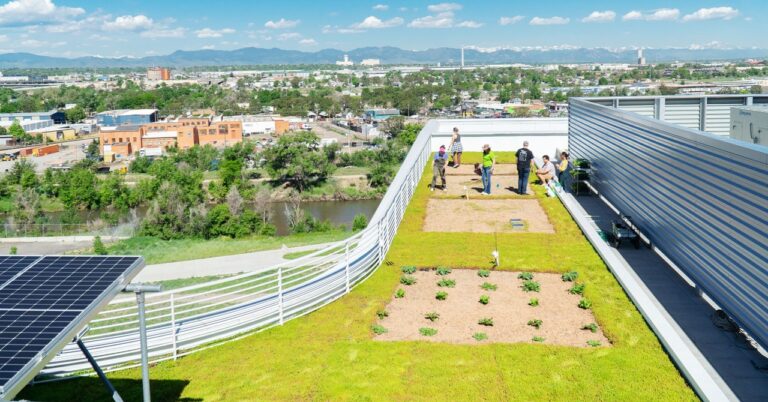5 tales above the bottom at Colorado State College, a impossible backyard grows beneath a protracted row of photo voltaic panels on the roof. It is 9 a.m. in late October, when the temperature is 30 levels Fahrenheit and the wind is biting. Not lengthy earlier than my arrival, researchers had eliminated the final of the frost-intolerant crops from the substrate beneath the panels, totaling 600 kilos for the season. As a substitute, cool-season meals like leafy greens (arugula, lettuce, kale, chard) nonetheless develop within the shade from the extraordinary daylight right here.
That is no peculiar inexperienced roof, however an unlimited, sensor-laden out of doors laboratory overseen by horticulturist Jennifer Bousselot. The concept behind agrivoltaic roofs is to mimic a forest on prime of a constructing. Simply because the shade of towering bushes protects undergrowth from photo voltaic stress, photo voltaic panels may promote plant development. The general purpose is to develop extra meals for the rising city inhabitants, whereas saving water and producing clear power. And make buildings extra power environment friendly.
Picture: Matt Simon
“Should you cease and take into consideration what we want as a society – our constructing blocks – will probably be meals, power and water, simply because it has all the time been,” says Bousselot. With rooftop agrivoltaic programs, “particularly in a largely unused area, you’ll be able to produce two of these issues and preserve the third.”

